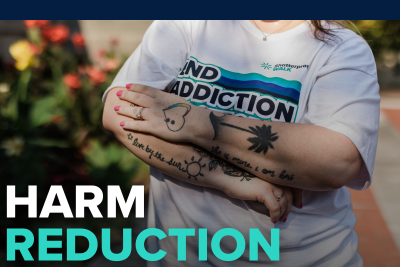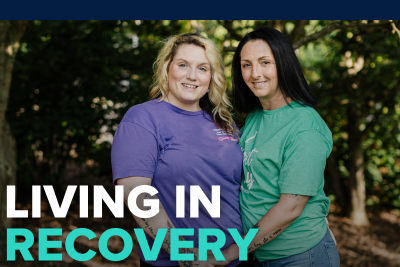
Impact of Social Exclusion
2024 Shatterproof Addiction Stigma Index Key Findings
To illustrate the real-world impact of stigma, the 2024 SASI results are illustrated through the lens of Kaitlyn and her journey with substance use.

Kaitlyn was introduced to opioids in her senior year of high school.
She recounts the moment she internally grappled with the fact that she was no longer just a teen experimenting with substances, but rather a person with SUD:
“I woke up one morning, and my whole body was hurting. I was physically sick. Somebody looked at me and handed me a certain substance, and as soon as I did it, I felt immediately better.
And the thought process that I had was, ‘That’s impossible,’ because I used to look down on people who were struggling with substance use disorder. I thought that would never be me.”

Misconceptions about who can develop SUD are common.
Many people have a limited understanding of the causes and nature of the condition, which makes them think “it can’t happen to me.”
Kaitlyn’s mother, Angela, admits that she was not always the most supportive during this difficult time in her daughter’s life. She remembers that she didn’t invite Kaitlyn to as many family events.
When Kaitlyn was invited, friends and family members expressed concerns. This social exclusion came just when Kaitlyn needed her family the most.
What does the general public believe?

are unwilling to live next door to a person with SUD

are unwilling to have someone with SUD as a close friend

would be unwilling to have an SUD group home in their neighborhood

would be unwilling to have someone with SUD marry into their family

Kaitlyn and her family’s experience is not uncommon.
Angela believes “it would have been easier on Kaitlyn if she had somebody supporting her when she was going through it,” but also emphasizes the toll Kaitlyn’s active use took on her own health.
Angela felt as though she needed to close off her heart to protect herself from the insurmountable emotions – worry, fear, shame, anger – she was navigating during this time.
It was not until Angela began to educate herself on SUD that she was able to build empathy for those experiencing it, including her daughter.

Stigma isn’t only present in social settings. It's also in the workplace.
Kaitlyn recalls how peers would talk about her behind her back, and management was unwilling to make accommodations for her to take medications for opioid use disorder (MOUD) as she strived to find stability.
“This made me feel less than. It lowered my self-esteem and made me feel like a failure.”
Even though 77% of Americans report being willing to have someone with SUD as a coworker, only 52% are willing to work in close proximity with that same person.




